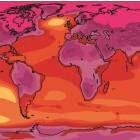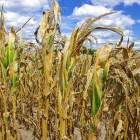Reducing Disaster Risks

Faculty Leaders
Thousands of lives and billions of dollars have been lost in recent natural disasters such as the 2010 Haiti and 2015 Nepal earthquakes and the 2011 Tōhoku earthquake and tsunami. Geohazards have shaped and reshaped the planet for millennia. Now climate change is adding to the threats, even as urban centers are expanding and more people are living in vulnerable locations.
The School of Earth, Energy & Environmental Sciences is viewed around the world as one of the foremost centers for natural hazards science. We are recognized for our long history of engagement as well as our range of cross-disciplinary expertise and the breadth of the hazards on which we focus.
We seek to understand these Earth processes—what causes them, how to predict where and when they will happen—but we also seek to reduce the risks to human well-being, especially in increasingly populated and vulnerable cities worldwide. Our deep expertise in both subsurface-originating hazards and the surface changes brought about by shifts in climate and land use provides a unique vantage point from which to analyze a new breed of potential hazards and risks.
With additional expertise in, for example, spatial planning, risk assessment, and analysis of complex flows, we hope to enhance our existing strength and more effectively support decision making for greater impact.

Are Ecosystems a Tsunami Defense?
Conventional wisdom holds that a natural buffer of vegetation can help protect coastal communities from some of the damage wrought by tsunamis, hurricanes, and extreme storm surges.
In an attempt to address these risks, many of which have been exacerbated by climate change, communities around the world are planting vegetation along coastlines and counting on it for protection. Whether and under what conditions this strategy works, however, has not been established.
An interdisciplinary group of Stanford scientists has launched an effort to learn more. Led by Jenny Suckale, assistant professor of geophysics, and involving faculty from across the university, this approach will combine ecosystem services analysis with highly computational biophysical models of wave dynamics, fluid flow, and more to provide knowledge for informed decision making.













